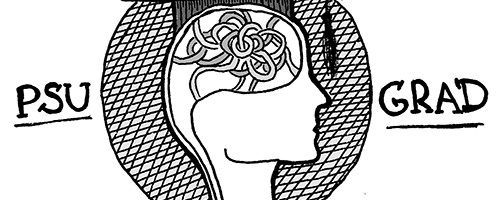Lois Lowry is the author of over 33 books and the recipient of two Newberry medals. Gossamer marks her first foray into adapting one of her books for the stage, and she chose to work with Oregon Children’s Theater, in conjunction with First Stage in Milwaukee, Wis. to create a moving piece where fantasy and reality merge.
What dreams may come
Lois Lowry is the author of over 33 books and the recipient of two Newberry medals. Gossamer marks her first foray into adapting one of her books for the stage, and she chose to work with Oregon Children’s Theater, in conjunction with First Stage in Milwaukee, Wis. to create a moving piece where fantasy and reality merge.
The play deals with two groups, Dream Givers and humans. The Dream Givers are a band of not quite human creatures whose job is fairly self-evident. They give dreams.
By touching human possessions, they gain fragments of the human story and blow them into the bodies of slumbering humans in order to bestow pleasant dreams. They also fight against the Sinisteeds, an unseen group who are in charge of nightmares.
The central human characters are John, his mother, and the woman who serves as his foster mother. Through a series of small moments, the audience discovers that John’s father has systematically abused him for his entire life.
In a series of phone calls to John’s caseworker, his mother discloses her passive role in the abuse, but attempts during the play to distance herself from the past and to assume sole responsibility for John in a healthy, loving way.
John is an angry 8-year-old boy who arrives at his foster home talking about guns and violence. His foster mother, herself haunted by the death of a fiancée in a war, isn’t prepared for his anger. But, she provides him with a home and listens to his troubles with patience and empathy. John hides his pain during the day by creating a wall of anger. However, the night leaves him unprotected.
Enter Littlest One, the newest dream trainer, and Thin Elderly, another member of the Dream Givers. These characters occupy a transitional space. They don’t carry the emotional burdens of the human characters, but they also cannot serve as comic relief.
As such, the actors in these roles must bridge that emotional space. As a youthful student, Littlest is primarily occupied with evincing empathy and glee. Jim Crino, as Thin Elderly, is given the greater task of expressing adult emotions, and he does so with dignity and aplomb.
The lovely irony of Gossamer is that though the world of the Dream Givers is clearly fantasy and the humans are obviously “real,” both groups are equally distant from the audience. Those having not been involved in the foster system may find John’s story as distant as the heap where the Dream Givers live.
And those involved in the system may have built walls that allow them the distance. But, the beauty of this arrangement is that Lowry offers numerous entries into a difficult discussion by mirroring reality with a fantasy that may ultimately be more accessible.
There are moments of such darkness in Gossamer that the audience finds itself trapped between adopting John’s pain or following his lead and constructing a wall. As John, Chase Klotter shows the character’s emotional burden with fierce rage, describing his victimization in third person and calling the “kid” dumb and stupid. It is a device that Lowry creates to move the audience to feeling, and it works. Klotter drives her words home.
The Dream Givers operate outside of this weight. They are employed as relief from the darkness of the plot. And, as they give John respite from his nightmares, they likewise allow the audience a break from the unrelenting reality of John’s childhood, his mother’s anguish at losing her child and his foster mother’s unpleasant memories.
Eric Hull as Most Ancient is hilarious. The leader of the Dream Givers, Most Ancient is prone to unrelated storytelling. Hull tackles these asides with genuine glee. Describing dogs that he has known, his face lights up with joy.
Dismayed by these moments of unprofessional behavior is Fastidious, Kerry Ryan, a fuss budgety old timer in the Dream Giver community. Originally Littlest’s trainer, Fastidious begs to be released from the task. She cannot deal with Littlest’s questions and antics. A character that could be played over the top for laughs, Ryan plays her straight and it couldn’t be a more successful choice.
As the Dream Givers who deals directly with John, Littlest and her new charge carry much of the play’s emotional weight. Played by Winter Wagner with energy and sweetness, Littlest One is childlike and curious. Her lack of knowledge about the rules of dream giving make her a bit of a rebel. And, as John begins to fall victim to Sinisteeds, Littlest is the perfect unconventional intermediary.
Overall, Gossamer presents serious topics with a gentle touch. Lowery dares to mix the dark and whimsical sides of childhood in her theatrical debut, and the result shows a level of success available only to a true expert of her subject matter.
GossamerOregon Children’s Theatrewww.octc.orgThrough November 9th



